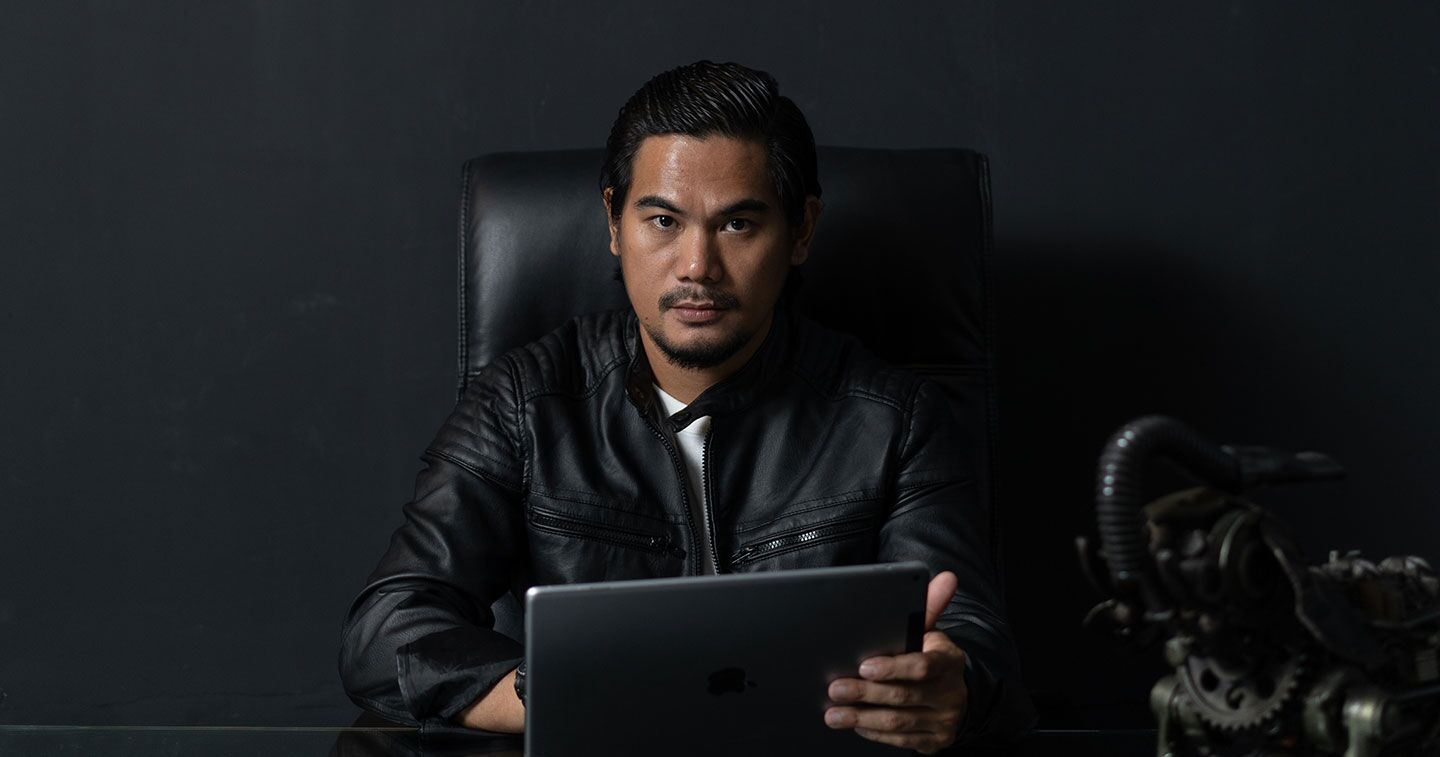Words by Bujit Tesoro | Interview by Abby Yao
Even the toughest creative give-up from the toughest clients. Some clients can be narrow-minded and stubborn. Others ultra-conservative. And then there are those who are just plain ignorant about advertising and pretend they know anything and everything, feeding writers copy that reads like a sales pitch.
But Ogilvy & Mather’s regional creative director for Asia-Pacific, Eugene Cheong realized early that “if you thing you can, you can sell any idea to any client.” During his stint in Ogilvy’s London office, Neil French’s Axe ads for Unilever made him believe that it’s possible. “That time, I thought, we can do great stuff and it was real. We never thought it as possible. Neil gave us hope that it could be done,” he attests.
And that’s what Eugene has been doing for that past 28 years. In fact, he now has over 300 international awards for blue-chip accounts like BMW, Guinness American Express, Coca-Cola, Uniliver, Kimberly-Clarke, Johnson & Johnson, Singtel, Microsoft, and The Economist, to name a few. He also penned some of Singapore’s most lauded advertising like East Timor Tourism, Hospice Council and the “God” campaign.
According to him, one way to establish a lasting client relationship so through consistently delivering outstanding work. He, in fact, bagged the chance to work on the God campaign through the recommendation of a client he previously worked with for a department store account. Clearly convinced by Eugene’s genius, the client told his colleagues to drop their plans of bidding out the account in favor of “a person who can make things happen.”
Instead of taking the easy way out and following the client’s directive to create something patterned after the America’s “Godspeed” campaign, he opted to go against that grain, and do something original. Feeling that the American campaign’s tonality was way too preachy, and might turn off the target market, he wrote about 150 ads that he refers to as more George Burns in tonality – light, witty and whimsical. He managed to sell the ads to 400 pastors (!), who saw the ads as funny, encouraging, positive and not a bit blasphemous. As evangelists, they apparently realized they could reach out to more people with the ads that portrayed God as more open and non-judgemental.
He described Asian clients as more entrepreneurial. “Chinese clients, for example, are very aggressive and arrogant. Maybe it’s because as a people, they have no graces. It’s very man for himself. They want the work to be fast, cheap and good (as if it were a stir-fried dish). If you don’t deliver what they want, they give you an ultimatum. Fact is, there are always least three other agencies lined up outside their doors. That’s why the work in China is poor even if people work for long hours.”
Though unfortunate: the requisite for translation of ads do not dishearten Eugene. A lot of clients insist on the translations unperturbed by the fact that a lot gets lost in translation. “You lose a lot especially with wordplay, so you just have to take caution, be more creative and patient in selling an idea that can remain intact even after translation. Then your ad survives.”
He remains hopeful that Japan would have a better showing in the years to come. “Even if Japanese clients are conservative, a country with the world’s 3rd largest economy is not punching its way. They should produce as much good as the U.S. or U.K. it seems they’re happy producing just one or two every year.” He elaborates: “Look at the Hungry campaign for Nissin noodles. After that, they haven’t produced anything that good. Uniqlo might have caught that attention of judges, bit after a while, since it’s digital, it has become too predictable.
Though Eugene sees Asian countries rising in the rankings of the world’s most creative shopes, he still feels that the region still lags behind. “More often than not, Asian clients question the value of advertising through newer media like digital. I feel that digital has fallen into a segment like direct marketing. Instead of only investing in mass media, I think they should set their sights in investing more in digital or other non-traditional media.”
His favorite clients are those from the 1980’s. “The previous clients were more savvy and advanced. Most of the time, they understood where we were coming from. They knew about aesthetics and all that. They respected the creative person. I remember I wrote for BMW for three of four years and my client only rejected one ad! And I was because he lacked the budget! He wasn’t a marketing expert, he was more of a sales director who was very trusting.”
Eugene has this bit of advice for young creative: “I’ve had my share of tough clients. The kind who were always nervous, afraid of their bosses and who kept on second-guessing their superior’s decision instead of making their own. But we still managed to come out with great stuff. If you’re a real creative, you’ll have to have that diving discontent. You have to keep wanting to do good work. Even if you’re faced with the worst clients.”
This article was first published in the January-February 2011 issue of adobo magazine with Tony Granger, Y&R Global Chief Creative Officer, in the cover.









